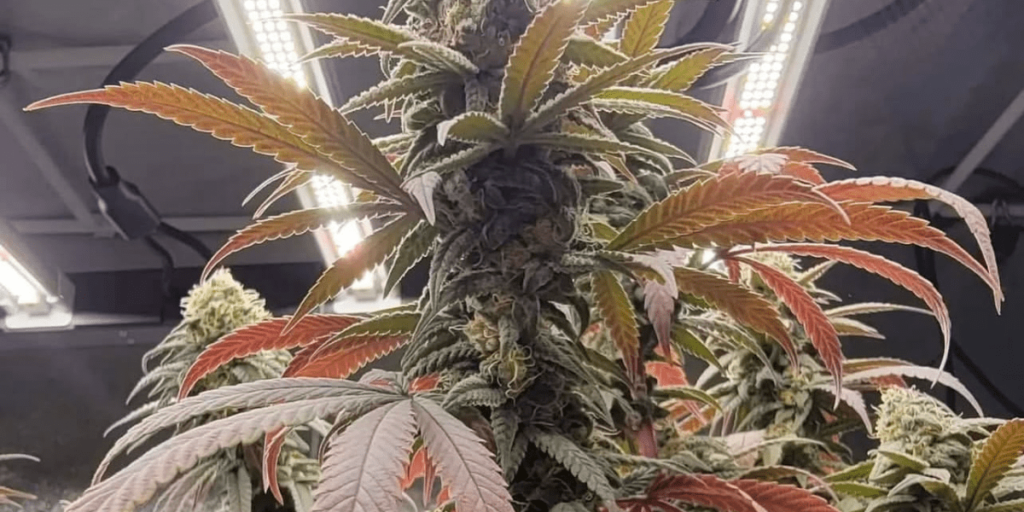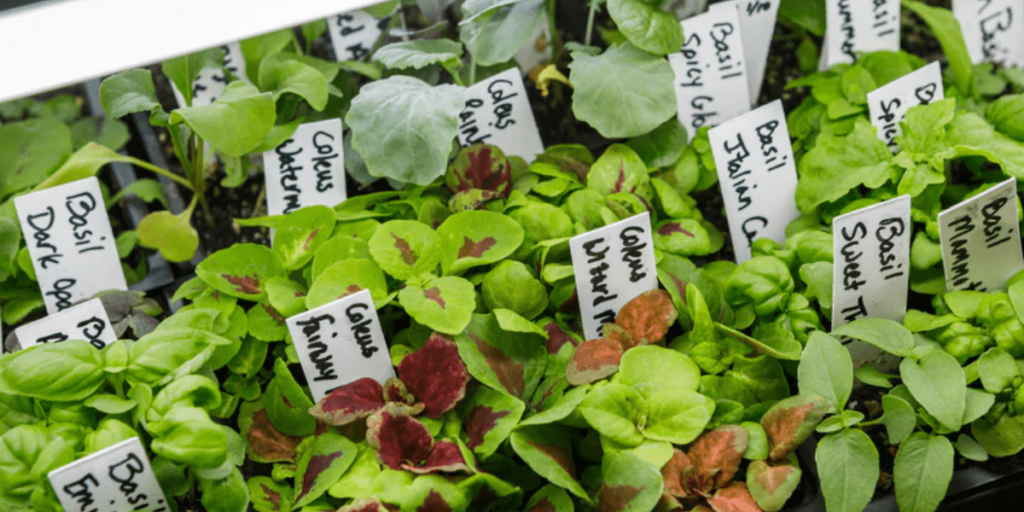Light Spectrum in Cannabis Cultivation is just as important as light intensity when it comes to growing healthy, productive plants. The colors of light you give your cannabis can have a big impact on how it grows, the shape and size of the buds, and even how much THC it produces.
Research shows that optimizing the spectrum can boost THC by up to 18 percent while also saving on energy costs. Paying attention to the light spectrum isn’t just a nice extra,it’s one of the smartest ways to grow stronger plants and achieve bigger, more potent harvests.
Understanding Light Spectrum in Cannabis
Photobiology might sound fancy, but it’s really just about how plants “see” and react to light. Cannabis doesn’t just use light to make food. It also uses it as a signal to grow strong stems and healthy leaves, start flowering, and even produce those tasty cannabinoids and terpenes we love. Blue light helps during the vegetative stage, making plants compact and leafy. Red light is a superstar when flowering, telling the plant it’s time to bud. Far-red light subtly changes plant shape and flowering timing, while green light sneaks through the canopy to feed lower leaves.
UV light, especially UV-B, is like a gentle stress that encourages your plant to boost cannabinoids and terpenes, adding potency and flavor. Understanding how your plants respond to each color lets you give them exactly what they need at each stage. With the right light, your cannabis can truly shine.
Optimizing Spectrum for Growth Stages
Getting the light spectrum right at each stage of growth can really change the game for your cannabis. When you match the light to what the plant needs, you’ll see healthier growth, stronger buds, and better overall results. It’s one of those little tweaks that makes a big difference once you try it.
1. Vegetative Stage: Best Spectrum for Leaves and Stems
During the vegetative stage, blue light in the 450 to 495 nanometer range is your best friend. It helps your cannabis grow compact and bushy with strong, healthy leaves. A little red light is fine too, just enough to keep the stems from stretching out too much. Make sure the light is bright enough to prevent your plants from reaching for it, but not so strong that it stresses them. This way, your plants stay happy and grow like champs.
2. Flowering Stage: Red & Far-Red for Buds and Yields
When your cannabis is ready to flower, red light between 620 and 680 nanometers really takes the lead. It helps trigger flowering hormones and encourages those buds to fatten up nicely. A bit of far-red light can also help fine-tune flowering timing and even boost yields if used carefully. Some growers like to add a touch of UV-B to give cannabinoid production a little extra kick, but it’s important not to overdo it, or you could stress the plants. With the right mix, your flowering stage can really shine.
3. Cloning & Seedlings: Spectrum for Strong Roots
For seedlings and clones, keeping the light gentle is key. Stick mostly with blue and white light to help roots grow strong and give young plants a sturdy start. Using a lower intensity light keeps things stress-free, letting your little plants settle in and grow healthy before they hit the vegetative stage. With the right light, your new plants will get off to the best possible start.
Advanced Cannabis Spectrum Techniques
These days, LED grow lights are on another level. You can actually program them to change colors and customize the spectrum so your plants get exactly what they need. It’s like having total control over how your cannabis responds, from growth to flowering, and it makes the whole process feel a lot more fun and rewarding.
1. Dynamic Spectrum Scheduling for Indoor Growth
Modern LED lighting systems are pretty amazing. You can customize the light spectrum to match exactly what your plants need. Changing the colors throughout the day helps mimic natural sunlight. This makes your cannabis grow healthier and stronger. For example, more blue light in the morning kickstarts vigorous growth. In the evening, shifting to red gently signals flowering. It’s like giving your plants a daily routine they actually respond to. This small adjustment can make a noticeable difference in how they develop.
2. Supplemental UV & Far-Red for Cannabinoids and Terpenes
If you really want to take things up a notch, adding a few extra wavelengths can make a big difference. Narrow-band UV LEDs or far-red LEDs are often used to fine-tune how cannabis flowers or even to influence cannabinoid production. Some studies suggest that a gentle boost of UV-B light can raise THC levels, as long as you keep the exposure balanced so the plants don’t get stressed. It’s like giving your grow a little secret ingredient that helps bring out more flavor and potency.
3. Balancing Spectrum & Intensity for Maximum Yield
Want to squeeze a little extra magic out of your grow? Playing around with extra wavelengths can do the trick. A touch of UV or far-red light can influence how your plants flower and even boost cannabinoid production. Growers have noticed that a small dose of UV-B, when used carefully, can give THC levels a nice push without stressing the plants. Think of it as a secret seasoning that brings out richer flavor and stronger effects in your harvest.
Comparing Grow Lights by Spectrum Performance
Picking the right grow light really comes down to a few key things. You want something that gives you flexibility with the spectrum, runs efficiently without eating up power, doesn’t put out too much heat, and of course fits your budget. Once you balance those factors, you’ll have a setup that keeps both you and your plants happy.
1. HPS: Spectrum and Plant Effects
HPS lights are a classic choice that many growers still swear by. They pump out a lot of red and yellow light, which makes them great for flowering, though they don’t really offer much in the way of blue or UV. The trade-off is that they run hot, so you’ll need to keep an eye on your environment to avoid overheating. They’re usually cheaper to buy upfront, but not as energy efficient in the long run.
2. CMH: Balanced Wavelengths for Veg Growth
CMH lamps are a nice middle ground if you’re looking for balance. They give off more blue light than HPS, which makes them a solid pick for the vegetative stage when you want strong, leafy growth. They also last longer and don’t run quite as hot, so they’re easier to manage in your setup. Many growers like them because they feel a bit more versatile and forgiving.
3. Full-Spectrum LEDs: Efficiency & Control
Full-spectrum LEDs are the go-to choice for many modern growers. You can actually program them to fine-tune the spectrum, whether you want more blue for veg or extra red for flowering, and some even let you add UV and far-red. They’re super energy efficient, give off very little heat, and while the upfront cost can feel steep, they usually pay for themselves in the long run with better control and healthier harvests.
4. Quantum Boards & LED Bars: Uniform Coverage
Quantum boards and LED light bars have become really popular because they spread light evenly and give you a lot of control over the spectrum. They work well in all kinds of grow spaces, big or small, and many growers find them super easy to set up. In practice, full-spectrum LEDs like these often end up beating traditional lamps when it comes to yield, quality, and even running costs, which makes them a favorite for anyone looking to upgrade their grow.
Expert Q&A: Optimizing Cannabis Spectrum
Q1: Can I just use red and blue lights for cannabis?
Red and blue are important, but your plants do better with a fuller spectrum. Adding green and far-red helps light reach deeper into the canopy, improves plant shape, and keeps them healthier overall. A broad spectrum is closer to real sunlight, and that usually means stronger growth and better results.
Q2: Does UV light hurt cannabis plants?
Too much UV, especially UV-C, can burn or damage your plants. But a little UV-B, when managed carefully, actually encourages cannabis to produce more cannabinoids and terpenes. Think of it like a gentle stress that makes the plant boost its defenses, which translates into stronger aroma and potency.
Q3: How often should I change the light spectrum?
The easiest way is to match the spectrum to the plant’s growth stage more blue during veg, more red during flowering. Some advanced growers even shift spectra throughout the day to mimic the sun rising and setting, but most people get great results just sticking to stage-based adjustments.
Q4: Are LED grow lights really worth it?
Yes, absolutely. LEDs are energy efficient, run cooler, and let you adjust the spectrum to your plants’ needs. They do cost more upfront, but they last much longer and usually pay for themselves with lower power bills and better harvests.
Q5: What does far-red light do for cannabis?
Far-red light influences how the plant senses shade. Used in the right amounts, it can speed up flowering and even boost yields. But too much will make your plants stretch out more than you want, so it’s all about balance.
Conclusion: Precision Spectrum for Better Yields
If you want the best results from your cannabis grow, paying attention to the light spectrum can make a huge difference. Giving your plants the right mix of colors at each stage helps them stay healthy, produce more cannabinoids and terpenes, and pack on bigger yields. With modern LED technology, it’s easier than ever to fine-tune your lights and really bring out the best in your plants. Think of it as combining a little science with some grower’s intuition to get a harvest you can be proud of.
Final Tips: Managing Spectrum & Light Intensity
If you really want to get the most out of your cannabis, investing in lights that let you control the spectrum is a game-changer. Keep an eye on your plants and adjust the lighting as they grow. It’s not just about how bright the light is, it’s about giving your plants the right colors at the right time to help them thrive.
Start by checking out our Red Light vs. Blue Light guide, and if you’re ready to take it further, dive into UV and IR techniques to really push your harvest to the next level.
We’d love to hear from you,what lighting challenges have you run into? Share your experiences in the comments, and don’t forget to tag us on Instagram @Greenfuturelight so we can see your grows in action!
For more tips on hydroponics, grow lights, and plant care, visit www.greenfuturelight. If you’re ready to upgrade your setup, browse our premium LED Grow Light Collection. And if you need a hand, reach out to our team for a free consultation.
Grow smart, grow strong, and have fun doing it. 💡



